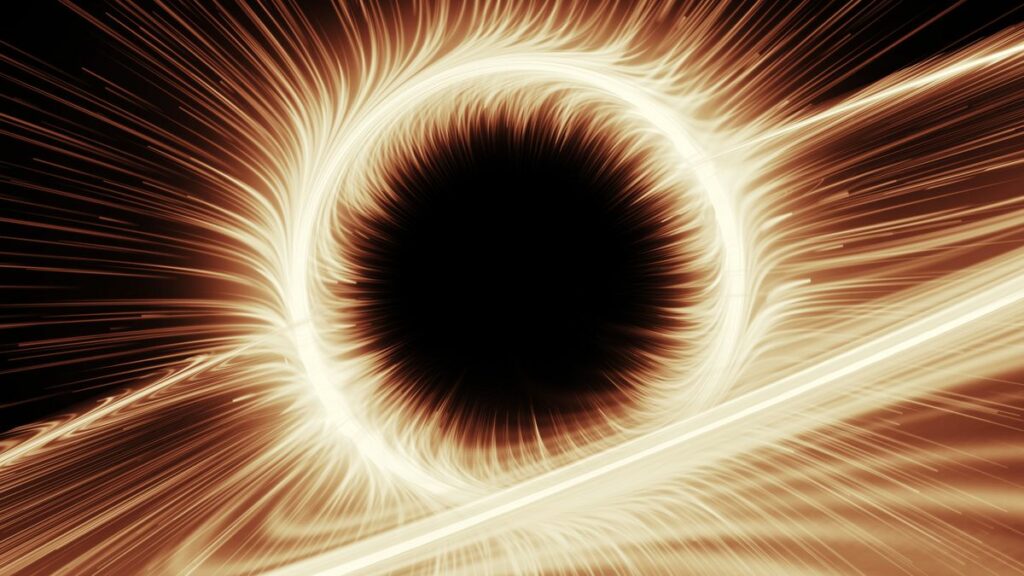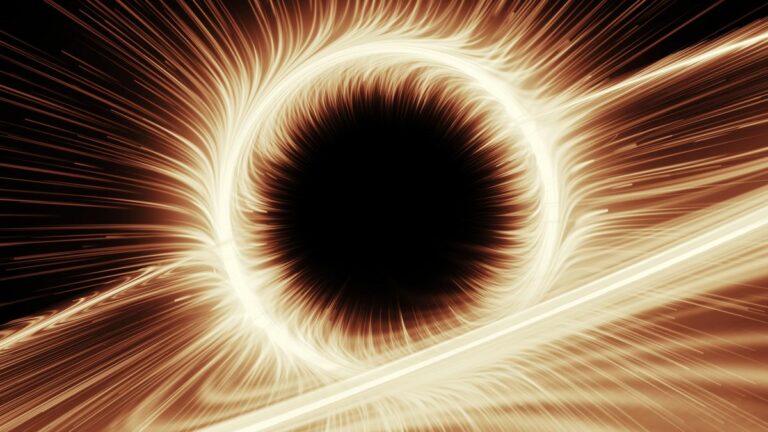A recent research indicates that black holes have the ability to generate space lasers, aligning with Einstein’s original hypothesis.
The discovery has the potential to assist us in locating the most elusive substances in the universe in the future.
If Albert Einstein’s numerous discoveries were to come together in a superhero cinematic universe, the ultimate team-up blockbuster would feature “gravitational lasers.” In 1916, Einstein introduced the concept of gravitational waves as part of his General Theory of Relativity, even though he was skeptical about their detectability at the time. Just a year later, the former patent clerk also presented his quantum theory of radiation, which included the notion of “stimulated emission of radiation”—the foundation of lasers. A recent paper published on the preprint archive arXiv suggests that gravitational waves could potentially travel across the universe in the form of a laser. This idea is quintessentially Einstein.

According to a study conducted by Jing Liu from the University of Chinese Academy of Sciences, stimulated radiation and gravitational waves are two significant predictions made by Albert Einstein. The study demonstrates that stimulated gravitational wave radiation can occur within gravitational atoms, which are composed of Kerr black holes and the surrounding boson clouds formed through superradiance. Gravitational waves are essentially ripples in the fabric of spacetime, formed by massive celestial objects and collisions such as pulsars, supernovas, merging supermassive black holes, and colliding neutron stars. These disturbances have been described as waves since Einstein’s initial conception, as they propagate outward and across the universe.
In 2016, the Laser Interferometer Gravitational-Wave Observatory (LIGO) detected these waves faintly for the first time. The new paper suggests that gravitational waves can also travel similar to a laser, but this theory relies on the inclusion of axions, a hypothetical weakly interacting boson that is a leading candidate for explaining dark matter. Axions, due to their lightness and quantum properties, would not fall into a rotating black hole but would instead exist around it, similar to how electrons exist near the nucleus of an atom.
Superradiance, an interaction that enables axions and gravitational wave emissions to generate synchronized excitations, can transform a black hole into a laser-like entity, emitting “gravitational lasers” across the universe, as described in the paper. However, due to the black holes dispersing these beams in random directions, the likelihood of Earth detecting one is extremely low. Nevertheless, this may not always be the case.
Recently, the European Space Agency, in collaboration with NASA, approved the deployment of LISA, a space-based gravitational wave detector. LISA will be capable of capturing much lower frequencies than LIGO, expanding the range of cosmic sources that can be explored through gravitational wave detection. Considering that even Einstein initially doubted the possibility of detecting gravitational waves, it remains uncertain what other remarkable phenomena await discovery in the vastness of the cosmos.
Do not forget to share your opinion with us to provide you with the best posts !




0 Comments